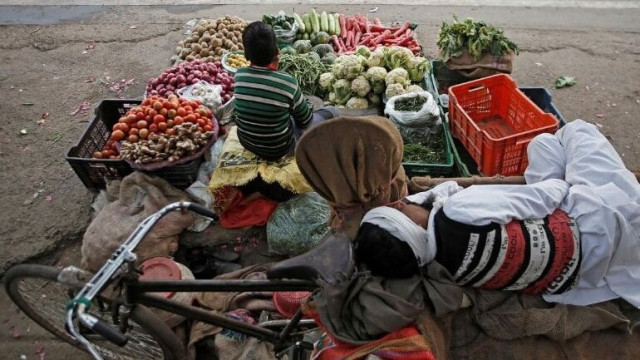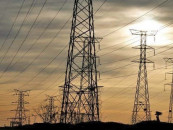Inflation soared to 10.7% in FY20
PTI govt misses annual target for second consecutive year

The average inflation in the fiscal year 2019-20 increased to 10.74% against the target of 8.5% set by the government, the Pakistan Bureau of Statistics (PBS) reported on Wednesday.
This is the second consecutive year that the federal government has missed the target because of the upward revision in utility prices and double-digit food inflation.
The year 2019-20 will be remembered in history as the fiscal year when the country had sufficient stocks of wheat, sugar and other food items but the prices soared because of smuggling, exports of commodities and unchecked hoarding.
On an average, the price of wheat increased by 17.7% and flour by 15% during 2019-20 against the fiscal year before that, according to the PBS.
The Economic Survey of Pakistan 2019-20 cited “steep surge in food inflation” due to a number of factors such as temporary supply disruptions in perishables and higher transportation costs.
The federal government had also missed the inflation target in its first year in power (2018-19) due to a surge in the prices of electricity and currency devaluation that stoked the inflation. In the last fiscal year, the rupee further shed its value by 5% and closed at Rs168.05 against the US dollar on June 30th.
For the fiscal year 2020-21, the government has set the inflation target at 6.5%.
The PBS inflation bulletin showed that during the just ended fiscal year, the inflation rose in both urban and rural areas. In urban areas, the average inflation increased to 10.2% while the pace was steeper in rural areas when the index clocked in at 11.6% by end of the fiscal year, according to the PBS.
The food inflation also spiked in the previous fiscal year and ended in double-digits. In urban areas the pace of food inflation increased to 12.9% against 10.6% a year ago. In rural areas, the food inflation was recorded at 15.2% in comparison with 13.7% a year ago, according to the PBS.
Similarly, there was also spike in the core inflation, which is measured by excluding food and energy items from the basket. The urban core inflation in June this year increased by 6.5% in comparison with 6.3% in the previous month.
The core inflation in rural areas increased by 8.8% in June 2020 as compared to an increase of 8.4% in the previous month.
The double-digit food and general inflation at the end of the fiscal year also puts a question mark on the policy of the central bank that tried to control energy and food prices driven inflation by keeping the interest rates high at 13.25% till March 17th of this year. It was only after the spread of deadly pandemic that the State Bank reluctantly started lowering its rates, which is now 7%.
The Ministry of Finance believes that the SBP uses core inflation while formulating its monetary policy but throughout the last fiscal year the interest rates remained positive by over 5.5% until the central bank started cutting the rates.
The country closed the last fiscal year in double digits despite the COVID-19 outbreak weakened demand putting downward pressure on commodity prices.
However, in the Economic Survey of Pakistan, the Ministry of Finance noted that there was also a risk of supply disruption.
“Falling international commodity prices especially crude oil will help ease inflationary pressures; however supply disruption and hoarding to push prices up”, according to the Ministry of Finance annual flagship publication.
A breakup of the inflation basket shows that the prices of food and non-alcoholic beverages group, which has 34.5% weight in the basket, increased 15.5% in the last fiscal year. Similarly, non-perishable food items prices increased 13% and perishable food items group prices soared by 29%.
The housing, water, electricity and gas group prices, which have 23.6% weight in the CPI basket, increased by 6.9% in the previous fiscal year. The inflation rate of the health group increased by 11.3%, transport by 10.7% and education group by 5.3%.
On an average, onion prices increased 68% in the previous fiscal year, gas prices 66.4%, pulses 66%, sugar 29%, vegetables about 27%, vegetable ghee 21.8%, wheat 17.7% and wheat flour 15.1%, according to the PBS.
On a yearly basis, the inflation in June rose to 8.6% as compared to a year ago, according to the PBS. The rate was slightly higher than the expectations due to uptick in food inflation. Wheat and flour prices increased by one-fourth and cooking oil by over 20% on a yearly basis.



















COMMENTS
Comments are moderated and generally will be posted if they are on-topic and not abusive.
For more information, please see our Comments FAQ